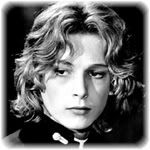
Yesterday's wiki daily article is on Tintin which explains for this sudden spark of interest in researching into my vague memory. I once bought a T-shirt with the blue lotus cover imprinted on the back. Thought I threw it away after a house cleaning. I threw away a lot of things which I shouldn't. This's definitely one of the comics I'll appreciate much better as a twenty something. The wordiness and maturity of contents (maturity doesn't imply violence or sexual explicitness here!) were of little interest to me as a child. I can't quite imagine the amount of research behind the story telling if the author didn't in fact travel around himself. Here's some info from wiki. The full entry is here.
The Adventures of Tintin (French: Les Aventures de Tintin) is a series of Belgian comic books created by Belgian artist Hergé, the pen name of Georges Remi (1907–1983). The series first appeared in French in a children's supplement to the Belgian newspaper Le Vingtième Siècle on January 10, 1929. Set in a painstakingly researched world closely mirroring our own, The Adventures of Tintin presents a number of characters in distinctive settings. The series has continued as a favourite of readers and critics alike for over 70 years.
The hero of the series is the eponymous character, Tintin, a young Belgian reporter and traveller. He is aided in his adventures from the beginning by his faithful dog Snowy (Milou in French). Later, popular additions to the cast included Captain Haddock and other colourful supporting characters.
The success of the series saw the serialised strips collected into a series of albums, spun into a successful magazine and adapted for both film and theatre. The series is one of the most popular European comics of the 20th century, with translations published in over 50 languages and more than 200 million copies of the books sold to date.
The comic strip series has long been admired for its clean, expressive drawings in Hergé's signature ligne claire (footnote1) style. Engaging, well-researched plots straddle a variety of genres: swashbuckling adventures with elements of fantasy; mysteries; political thrillers; and science fiction. The stories within the Tintin series always feature slapstick humour, offset in later albums by sophisticated satire and political/cultural commentary.
Online Links
Tintin official site
Tintinologist.org
1. Ligne claire (French for "clear line") is a style of drawing pioneered by Hergé, the Belgian creator of The Adventures of Tintin. It is a style of drawing which uses clear strong lines which have the same thickness and importance, rather than being used to emphasize certain objects or be used for shading (for this reason it is sometimes also called the democracy of lines). Additionally, the style often features strong colours and a combination of cartoonish characters against a realistic background. The use of shadows is sparse and all elements of a panel are delineated with clear black lines. The name was coined by Joost Swarte in 1977.
Hergé started out drawing in a much looser, rougher style which was influenced partially by the famous American comic strip artists of the late 1920s and 1930s. It was only after World War II that his drawing style evolved into ligne claire. For Hergé, the style was not limited to the drawings but extended to the story: the plot must be straightforward.











































































No comments:
Post a Comment